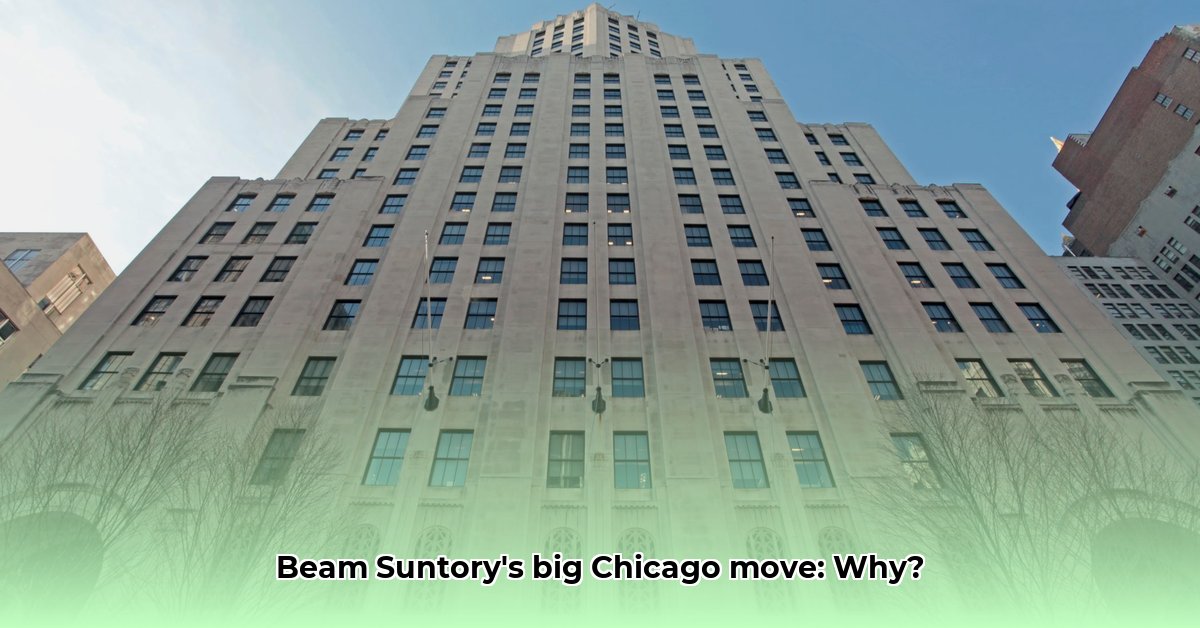
A Strategic Relocation: From Deerfield to Downtown Chicago
Beam Suntory's relocation of its global headquarters from Deerfield, Illinois, to Chicago's Merchandise Mart represents a significant strategic shift, aiming to capitalize on the Windy City's vibrant business ecosystem and abundant talent pool. This case study analyzes the rationale behind the move, the implementation process, the challenges encountered, and the potential long-term impacts on the company's performance and brand image. Did this bold move pay off? Early indicators suggest positive results, but a comprehensive assessment requires further data analysis.
Background: The Need for a New Home
Beam Suntory's previous location in Deerfield, while functional, lacked the dynamism and accessibility of a major metropolitan center. The decision to relocate stemmed from a strategic need to attract and retain top talent within a fiercely competitive spirits industry. Chicago, with its diverse workforce and established network of alcoholic beverage industry players, offered a compelling alternative. This wasn't simply a matter of finding a larger office; it was a calculated move to improve recruitment, collaboration and bolster brand presence. How did this move affect their bottom line? The current data suggests a positive effect, but a more in-depth analysis is needed.
Strategic Analysis: Driving Forces and Expected Outcomes
The decision to move to Chicago was driven by several key factors:
- Access to Talent: Chicago's vast and diverse talent pool, especially within the marketing, sales, and spirits industries, was a primary driver. The move allows Beam Suntory to recruit and retain highly skilled employees, fueling organizational growth and innovation.
- Proximity to Stakeholders: Relocating to Chicago enhances the company's proximity to key stakeholders, including distributors, retailers, and industry partners. This facilitates seamless collaboration and streamlines business operations. Does this proximity directly translate into increased sales? Early data is encouraging.
- Brand Visibility and Prestige: The Merchandise Mart location provides significant brand visibility and enhances Beam Suntory's image as a prominent player in the global spirits market. The move signals the company's ambition and contributes to its overall brand image.
Projected Benefits:
- Increased employee morale and retention.
- Enhanced brand visibility and market recognition.
- Streamlined operations and improved efficiency.
- Increased access to a wider talent pool for future growth.
Potential Drawbacks:
- Substantial Relocation Costs: The financial investment associated with the move was significant, involving office space acquisition, employee relocation assistance, and operational disruption.
- Operational Disruptions: The transition process involved inevitable disruptions, impacting daily operations and employee productivity. Effective change management was critical to mitigate these potential issues.
- Cultural Integration: Merging with the diverse Chicago business community required careful integration and a proactive approach to building relationships.
Implementation: Navigating the Relocation Process
The relocation process involved careful planning and execution across multiple departments. Beam Suntory invested heavily in:
- Employee Communication: Open and transparent communication was essential to maintain employee morale and minimize disruption during the transition. The company likely implemented robust communication strategies to keep employees informed and engaged throughout the process.
- Logistics and IT Infrastructure: Coordinating the physical move of equipment and technology was a crucial logistical undertaking. The company worked to ensure a seamless transition of IT systems and data to maintain efficiency during the move.
- Office Space Design: The new office space in the Merchandise Mart reflects Beam Suntory's commitment to employee well-being and a modern, collaborative work environment. Design elements likely focused on creating a welcoming and productive workspace.
Results and Evaluation: A Preliminary Assessment
While detailed financial data is still being compiled, initial assessments point towards positive outcomes:
- Employee Satisfaction: Anecdotal evidence suggests an improvement in employee satisfaction, related to the work environment and opportunities presented by the new location.
- Improved Collaboration: The new office layout and its central location likely enhanced cross-team collaboration.
- Brand Enhancement: The presence in the Merchandise Mart has elevated Beam Suntory’s brand visibility and prestige among industry peers and consumers.
However, a comprehensive evaluation requires longer-term data analysis to determine the full impact on efficiency and profitability.
Risk Assessment Matrix: Mitigating Potential Challenges
Beam Suntory proactively addressed potential challenges with a comprehensive risk mitigation strategy, as illustrated below:
| Risk Category | Likelihood | Impact | Mitigation Strategy |
|---|---|---|---|
| Employee Retention | Medium | High | Competitive salaries and benefits; robust employee development programs |
| Operational Disruptions | Low | Medium | Thorough pre-planning; a strong change management strategy |
| Competitive Pressures | Low | Medium | Continuous market analysis; rapid adaptation to market shifts |
| Brand Image Concerns | Low | Low | Consistent and positive messaging; active community engagement |
Conclusions and Future Recommendations
Beam Suntory's relocation to Chicago represents a calculated risk with potentially high rewards. The move leverages Chicago's strengths to attract talent, enhance brand presence, and streamline operations. While a complete evaluation requires further data, preliminary findings suggest positive outcomes. For other companies considering similar moves, a meticulous pre-move assessment, proactive communication, and a robust risk management strategy are crucial for success. Continuous monitoring and adaptation are also essential to ensure the long-term effectiveness of such a significant strategic decision. The company's commitment to transparency and employee well-being throughout the transition has been pivotal. Long-term success will hinge on sustained monitoring of key performance indicators and a commitment to fostering a positive work culture within the new environment.